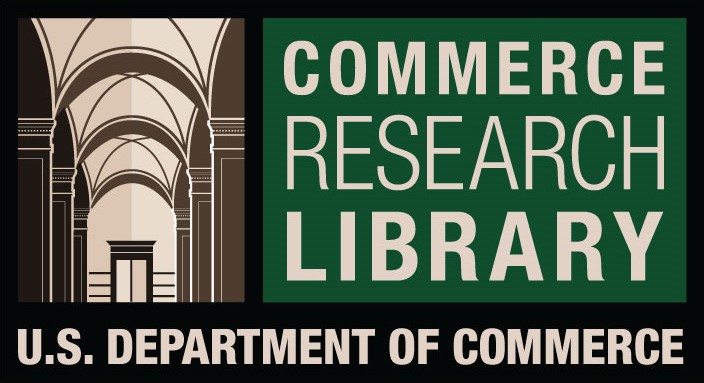Digital Technology Usage as a Correlate of InSchool Adolescents‟ Risky Sexual Behaviour in Federal Capital Territory (FCT), Abuja
DOI:
https://doi.org/10.61841/0yz1wb95Keywords:
Digital technology, Adolescent, Risky sexual behaviour, genderAbstract
The study sought to determine the relationship between digital technology usage and risky sexual behaviour of in-school adolescents in Gwagwalada Area Council. The study adopted correlational survey design. The main purpose of the study was to find out the relationship between digital technology usage and in-school adolescent risky sexual behaviour. The population for the study is 1693 research elements from public schools. It consists of 873 females and 820 males. A total of 253 respondents were randomly selected from public secondary schools consisting 135 females and 118 males drawn from 5 public secondary schools in Gwagwalada Area Council using simple random sampling technique. Two research questions and two hypotheses guided the study. The instrument used for the collection of data was digital technology usage as correlate of in-school adolescent risky sexual behaviour questionnaire (DTUC1ARSBQ). The reliability of the instrument was carried out using Cronbach alpha. The data was collected through the help of two research assistants. The research questions were answered using regression analysis at 0.05. The study reported that there is a high positive relationship between digital technology and in-school adolescent risky sexual behaviour. The study also discovered that digital technology was responsible for the in-school adolescent risky sexual behaviour. That there is a significant relationship between digital technology usage and in-school adolescents’ risky sexual behaviour, F(1,448)=952.287, p=0.000. That both in-school adolescent boys and girls are affected by the use of digital technology among others. It was recommended that parents and teachers should monitor the internet cites the in-school adolescents visit in order to reduce their risky sexual behaviours.
Downloads
References
1. Abdullahi, A.A &Abdulquardri, N.T (2018). New Media and Adolescents Sexual Behaviour in Sub-Sahara
Africa: Linking Theories to Realities. Reproductive Health in Sub-Saharan Africaoriginal SAGE OPEN
2. Abudullahi, A.A, Adekeye, I.B, Mahmoud, K.O &Akor, S.J (2013). Sexual and Health Preventive Behaviour
of Secondary School Students in Ilorin, Kwara State, Nigeria. Centre Point Journal, 17, 61-80
3. Adhikari, R (2010) Are Nepali students at risk of HIV? A cross sectional study of condom use at first
sexual intercourse among college students in Kathmandu 13:7
4. Alio, A.N &Aneke, C (2015). Correlates of Internet Use among Secondary School Students in Nigeria.
International Journal of Education, Learning and Development. vol.4, N0.1
5. American Psychological Association. (2015). Guidelines for psychological practice with transgender and
gender nonconforming people. American Psychologist, 70(9), 832-864.
6. Asphiekpe, A.O &Ugande, G.B (2017). Analysis of the effects of social media sexting on adolescents and
youths sexual behaviours and attitudes towards sexuality in Nigeria. International Journal of
Innovative Research and Advanced Studies Vol.4 issue 1
7. Braun-Courville, D.K., &Pogas, M. (2009). Exposure to sexually explicit web sites and adolescent sexual
attitude and behaviours. The Journal of Adolescent Health, 45,156-162.
8. Carlson, D.L. (2014). Neighborhoods and racial ethnic disparities in adolescent risky sexual Behaviour. J
youth adolescence 43 (9):1536-49
9. Caroll, J.A & Kirkpatrick, R.L. (2011). Impact of social media on adolescent behavioural health.
Oakland, CA: California Adolescent Health Collaborative.
10. Centers for Disease Control and Prevention CDC (2010). Youth Risk Behaviour Surveillance, United
States, 2009. Available at http://www.cdc.gov/mmwr/preview/mmwrhtm1/ss5905al.htm
11. Chukwurah, E. (2006). Adolescent psychology and education. an unpublished manuscript. Department
of Educational Psychology. NwaforOrizu College of Education Nsugbe.
12. Consalvo, M. &Ess, C. (2001). The handbook of internet studies. Oxford, UK: Willey- Blackwell.
13. Copper, M.L (2002).”Alcohol Use and Risky Sexual Behaviour among College Students and Youths:
Evaluating the evidence”. Journal of Studies on Alcohol Vol. 14
14. Federal Ministry of Health (2009). National HIV/AIDS and reproductive health survey. Federal Ministry of
Health. Abuja Nigeria
15. Gubhaju, B.B (2002). Adolescent reproductive health in Asia. Asian- Pacific Pop. J 17 (4) 97-118
16. Ihejirika, J.C (2011). Teaching strategies for adolescence sexuality: Implications for learning
characteristics for effective teaching- learning transaction. Academic Research International, 4 (2), 2-10
17. Ivankoviah B.C, & Douglas, K.A (2013). Family relationship and adolescent pregnancy risk: a
research synthesis. Developmental Review, 21-38
18. James, A. A.&Bundekaan, G.U (2017). Analysis of the effects of social media sexing on adolescents and
youths sexual behaviours and attitudes towards sexuality in Nigeria. International Journal of
Innovative Research and Advanced Studies vol.4 2394-4404
19. Lindsay, R.B. (2011). Social media and disaster: Currents uses, future options and policy considerations
(congressional Research Service Report for Congress). Congress Research Service. Retrieved from
https://www.fas.org/sgp/crs/homesec/R41987.pdf
20. Marist Brothers of the Schools (2010). Religious and Moral Education for Use in Marist SeniorSecondary
Schools. Enugu: Optimal Publishers.
21. Markey, P.M. & Markey, C.N., (2010) Changes in pornography-seeking behaviours following political
elections: an examination of the challenge hypothesis. Evolution & Human behaviour, 31: 442-446.
22. Matthew, D, Joro, D & Manasseh (2015). The role of information technology in Nigeria Education system.
International Journal of Research in Humanities and Social Studies Vol.2, issue 2 64-68
23. Melby,T. (2009). Sexuality Education 2.0. Contemporary sexuality, Vol.43, N0. 10, pp. 1-7.
24. Mmaduakonam, A.E., (2006). Sources of frustration and anxiety among the adolescents. An
Unpublished Manuscript. Department of Educational Psychology NwaforOrizu College of Education
Nsugbe
25. Njoku, . M.O., (2006). Guidance and counselling in education. Nsukka: Chulbson International Press
26. Nwagwu, W.E (2017). “Social networking, identity and sexual behaviour of undergraduate students
in Nigerian universities” World Journal of Science, Technology and Sustainable Development, Vol. 9
N0.3 pp.235-253
27. Nwankwo, B.O &Nwoke, E.A., (2009). Risky sexual behaviour among adolescents in Owerri Municipal:
Predictors of Unmet family health needs. African Journal of Reproductive Health Vol 13 N01
28. Odimegwu, C &Somefun, D.O. (2017). Ethnicity, gender and risky sexual behaviour among Nigerian
Youth: an alternative explanation. Open Access a Journal of Reproductive Health DOI: 1186/s12978
29. Ofoefuna, M.O (2001). Educational Technology and Instruction. Onitsha: West and Solomon
Publishing coy
30. Okoro, O. (2001). Sociology of education and educational process. Onitsha: West and Solomon
Publishing Coy
31. Okwuchukwu, G.O (2014). Pornography and child safety on the internet. International Journal
ofHumanities social sciences and EducationVol1(6)
32. Owens, E.W., Behun, R.J., Manning, J.C & Reid, R.C.,(2012). The Impact of Internet Pornography on
Adolescents: A review of Research, Sexual Addiction & Compulsivity. Sexual Addiction & Compulsivity,
19: 99-122
33. Peterson, I Bhana, A & McKay, M (2005). Sexual violence and youth in South Africa: The need
for community-based prevention interventions. Child Abuse Negel 29: 1233-1248
34. Satterwhite CL, Torrone E, Meites E, Sexually transmitted infections among US women and men:
Prevalence and incidence estimates, 2008. Sex Transm Dis 40 (2013): 187-193.
35. Techterms, (2010). Definition of ICT. Retrieved August 5, 2015 from
http://www.techterms.com/definition/ict
36. Undiyaundeye, F (2014). Impact of social media on children, adolescents and families. Global Journal of
Interdisciplinary Social Sciences Global Institute for Research and Education vol.3 (2):1-4
37. UNICEF. Fact sheet N0. 345: Young People and Family Planning: Teenage Pregnancy. Malaysia
UNICEF (2008)
38. Wang, D. (2007). Impact of Information and communication technologies (ICT) on time use and
travel behaviour: a structural equations analysis. Retrieved August 2, 2015, from
http://link.springer.com/article/10.1007/s11116-007-9113-0page-2
Downloads
Published
Issue
Section
License
You are free to:
- Share — copy and redistribute the material in any medium or format for any purpose, even commercially.
- Adapt — remix, transform, and build upon the material for any purpose, even commercially.
- The licensor cannot revoke these freedoms as long as you follow the license terms.
Under the following terms:
- Attribution — You must give appropriate credit , provide a link to the license, and indicate if changes were made . You may do so in any reasonable manner, but not in any way that suggests the licensor endorses you or your use.
- No additional restrictions — You may not apply legal terms or technological measures that legally restrict others from doing anything the license permits.
Notices:
You do not have to comply with the license for elements of the material in the public domain or where your use is permitted by an applicable exception or limitation .
No warranties are given. The license may not give you all of the permissions necessary for your intended use. For example, other rights such as publicity, privacy, or moral rights may limit how you use the material.












